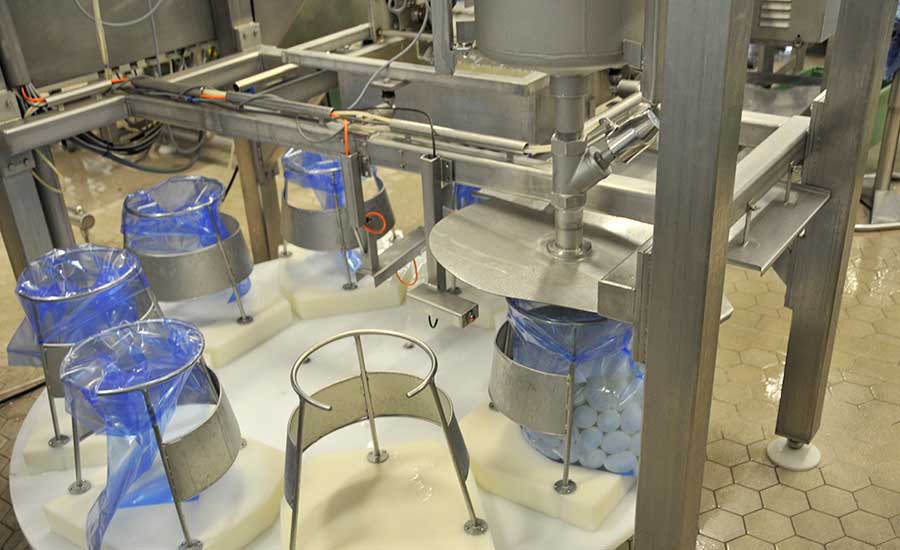
What is the Accuracy of a Liquid Filling Machine?
- Introduction
In manufacturing and packaging, liquid filling machines are critical in efficiently and accurately filling various liquids into containers. Whether it’s a pharmaceutical product, food item, or liquid-based commodity, filling accuracy is crucial to maintaining product quality and adhering to industry standards. This article delves into the significance of accuracy in liquid filling machines, the factors affecting it, and measures to improve it.
- Understanding Liquid Filling Machines
2.1 Types of Liquid-Filling Machines
Liquid filling machines come in various types, each designed to suit specific industries and requirements. The most common types include pistons, gravity, pump, and overflow fillers. Each type has advantages and limitations, affecting the overall accuracy of the filling process.
2.2 How Liquid Filling Machines Work
Liquid filling machines operate based on different principles. Still, the primary goal is to transfer a precise volume of liquid into containers. The machines may use volumetric or net-weight filling methods, which impact accuracy differently. Understanding the working principles is vital to comprehend accuracy better.
2.3 Factors Affecting Accuracy
Several factors influence the accuracy of liquid filling machines. These include the viscosity of the liquid, the filling machine used, container variations, environmental conditions, and the skill of the machine operator. Manufacturers must address these factors to achieve consistent and reliable filling accuracy.
- Importance of Accuracy in Liquid Filling Machines
3.1 Ensuring Product Quality
Accurate filling is directly linked to product quality. Underfilling can lead to dissatisfied customers while overfilling can result in financial losses and compliance issues. Maintaining precision during the filling process ensures that customers receive the right amount of product as intended.
3.2 Reducing Material Waste
Accurate liquid filling can significantly reduce material waste. Minimizing waste becomes crucial in industries where the liquids being filled are expensive or scarce, such as pharmaceuticals, chemicals, and specialty foods. A precise filling helps optimize material usage and lowers production costs.
3.3 Complying with Regulations
Many industries are subject to strict regulations concerning product measurements. Accurate filling is necessary to meet legal requirements and comply with industry standards. Failure to do so can lead to legal consequences and reputational damage.
- Measures to Improve Accuracy in Liquid Filling Machines
4.1 Calibration and Regular Maintenance
Regular calibration of liquid filling machines is essential to maintain accuracy. Additionally, routine maintenance helps identify and rectify any issues affecting filling precision. Following a strict maintenance schedule can enhance the overall performance of the machines.
4.2 Choosing the Right Machine
Selecting the appropriate type of liquid filling machine for a specific product. Manufacturers must consider the viscosity, consistency, and specific requirements of filling the liquid. Investing in a suitable machine will contribute significantly to accuracy.
4.3 Operator Training and Skill
Skilled and trained machine operators are vital for accurate filling. Training programs should focus on operating procedures, maintenance protocols, and troubleshooting techniques. Well-trained operators can identify and address potential inaccuracies promptly.
- The Impact of Perplexity and Burstiness on Accuracy
The concepts of perplexity and burstiness refer to the unpredictability and irregularity of the liquid flow during the filling process. While high perplexity can lead to variations in filling rates, burstiness can cause sudden spikes or drops in flow. Manufacturers must address these phenomena to maintain consistent accuracy.
- How to Maintain Specificity and Context
While striving for high perplexity and burstiness, manufacturers must not compromise on maintaining specificity and context. The filling process must align with the intended quantity and quality, ensuring that each container receives precisely what it requires.
- The Benefits of Using a Conversational Style
Incorporating a conversational style in writing and content creation makes information more accessible and engaging for readers. Readers are drawn into the content by using an informal tone, personal pronouns, and rhetorical questions and can better understand complex concepts.
- Conclusion
The accuracy of a liquid filling machine is paramount in various industries. From ensuring product quality to complying with regulations and reducing material waste, precise filling brings numerous benefits. Manufacturers can achieve accuracy through proper machine selection, regular calibration, and operator training. By addressing perplexity and burstiness while maintaining specificity and context, manufacturers can enhance their liquid filling processes’ overall efficiency and reliability.
- FAQs
Q1: Why is the accuracy of a liquid filling machine important? A: A liquid filling machine’s accuracy is crucial to maintaining product quality, reducing material waste, and complying with industry regulations.
Q2: How can I improve the accuracy of my liquid filling machine? A: You can enhance accuracy by choosing the suitable machine, calibrating it regularly, and ensuring your operators are well-trained.
Q3: What are the common types of liquid filling machines? A: The common types include piston fillers, gravity fillers, pump fillers, and overflow fillers.
Q4: What factors affect the accuracy of liquid filling machines? A: Viscosity of the liquid, filling machine, container variations, environmental conditions, and operator skill can impact accuracy.
Q5: Why should I use a conversational style in my content? A: Using a conversational style makes your content more engaging, accessible, and relatable to your readers.


